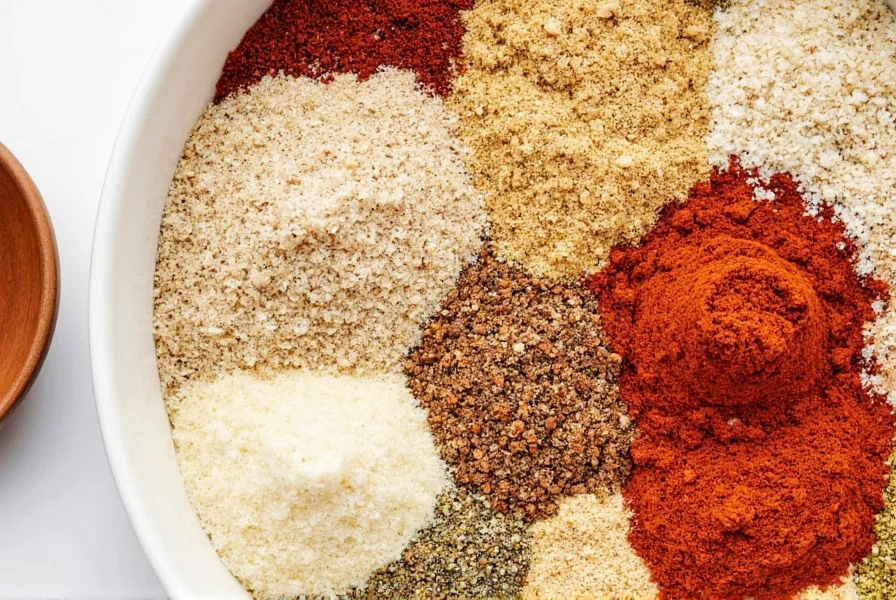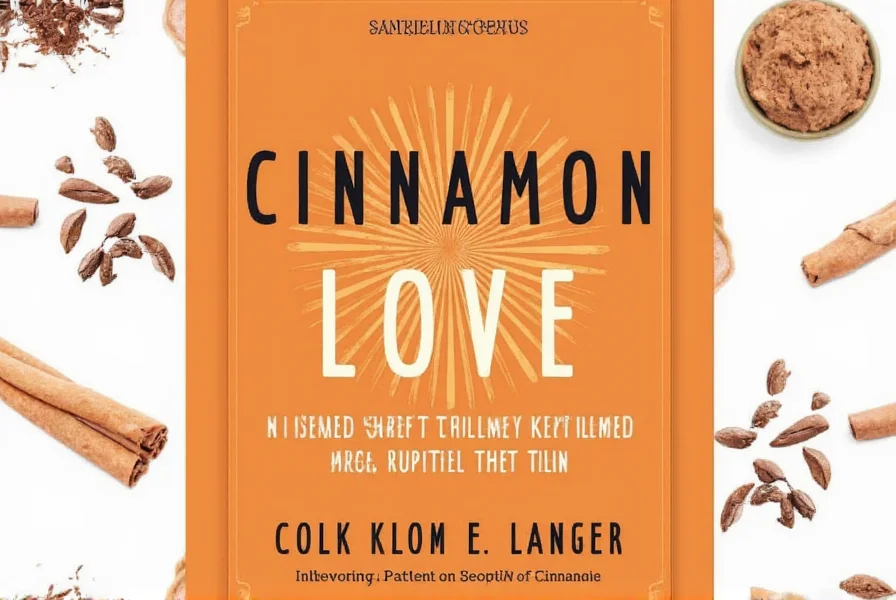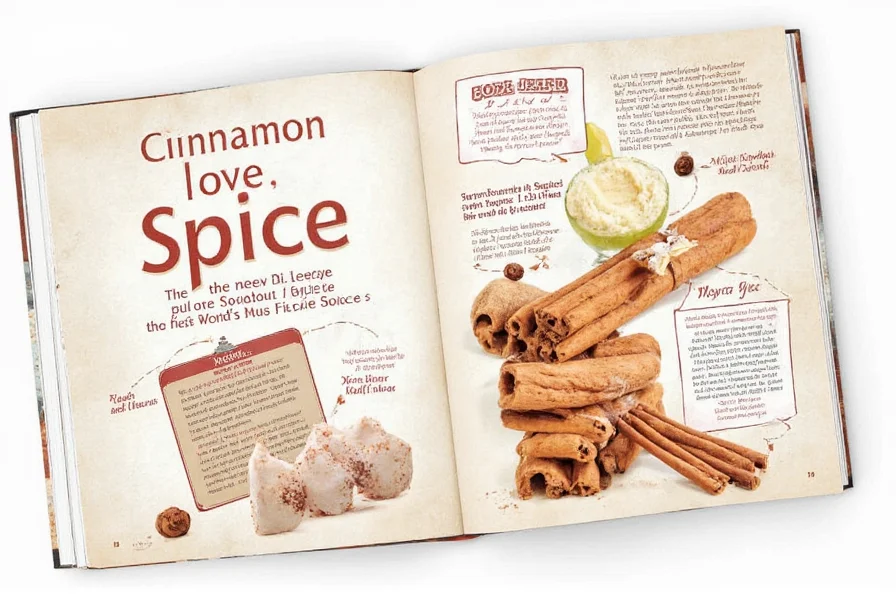Table of Contents
- Introduction: Understanding Cinnamon
- Types of Cinnamon: Cassia vs. Ceylon
- Health Benefits of Cinnamon: Evidence-Based Information
- Cooking with Cinnamon: Professional Techniques
- Buying Guide: How to Choose Quality Cinnamon
- Frequently Asked Questions About Cinnamon
- Conclusion: Making Informed Choices
Introduction: Understanding Cinnamon
Cinnamon is one of the world's most widely used spices, with a rich history dating back thousands of years. This article provides evidence-based information about cinnamon types, health benefits, and culinary applications to help you make informed decisions about incorporating this spice into your diet.
Our content is reviewed by certified nutritionists and culinary experts to ensure accuracy and relevance. All health claims are supported by peer-reviewed scientific research.

Types of Cinnamon: Cassia vs. Ceylon
When it comes to cinnamon, not all varieties are the same. Understanding the differences between Cassia and Ceylon cinnamon is essential for both culinary and health considerations.
Cassia Cinnamon (Chinese Cinnamon)
- Bold, strong flavor
- Thicker, harder bark
- More affordable and widely available
- Higher coumarin content (may be harmful in large amounts)
Ceylon Cinnamon (True Cinnamon)
- Milder, sweeter taste
- Thin, papery bark that curls easily
- Less common and more expensive
- Lower coumarin levels — safer for regular consumption
| Type | Flavor | Texture | Cost | Safety |
|---|---|---|---|---|
| Cassia | Strong, spicy | Thick and hard | $ | Moderate use recommended |
| Ceylon | Mild, sweet | Thin, layered | $$ | Safe for regular use |
Health Benefits of Cinnamon: Evidence-Based Information
Scientific research supports several health benefits of cinnamon. The following information is based on peer-reviewed studies published in reputable medical journals.
1. Blood Sugar Regulation
Multiple studies have shown that cinnamon may help improve insulin sensitivity and lower blood sugar levels. A meta-analysis published in the Journal of the Academy of Nutrition and Dietetics (2016) found that cinnamon consumption significantly reduced fasting blood glucose levels in people with type 2 diabetes.
2. Anti-Inflammatory Properties
Cinnamon contains powerful antioxidants like polyphenols that reduce inflammation and protect cells from oxidative damage. Research in the Journal of Agricultural and Food Chemistry (2018) demonstrated cinnamon's potent anti-inflammatory effects at the molecular level.
3. Heart Health Support
Regular cinnamon consumption may improve cholesterol levels, triglycerides, and blood pressure. A study in the Diabetes Care journal (2003) showed that cinnamon reduced total cholesterol, LDL cholesterol, and triglycerides in patients with type 2 diabetes.
4. Antimicrobial Effects
Historically used to preserve food and fight infections, cinnamon's natural compounds can inhibit the growth of bacteria and fungi. Research published in the Journal of Antimicrobial Chemotherapy (2011) confirmed cinnamon's effectiveness against various pathogens.
Cooking with Cinnamon: Professional Techniques
Whether you're baking cookies or seasoning a savory stew, cinnamon adds depth and warmth. Here are professional culinary techniques to maximize cinnamon's flavor profile:
Top 5 Cinnamon Cooking Tips from Professional Chefs
- Toast it lightly: For a deeper flavor, toast ground cinnamon in a dry pan before using it in recipes. This activates the essential oils and enhances aroma.
- Use it in both sweet and savory dishes: Think beyond desserts—cinnamon pairs beautifully with lamb, squash, and even lentils. Professional chefs often use it in Moroccan tagines and Mexican mole sauces.
- Infuse liquids: Add cinnamon sticks to tea, coffee, milk, or broth for a subtle, warming flavor boost. This technique is commonly used in professional kitchens for syrups and sauces.
- Pair it wisely: Cinnamon loves vanilla, nutmeg, cloves, and citrus zest. Experiment with combinations to create balanced flavor profiles.
- Store properly: Keep cinnamon in an airtight container away from heat and light to maintain potency for up to a year. Professional chefs recommend storing whole cinnamon sticks for maximum freshness.
Creative Uses for Cinnamon in Professional Cuisine
- Make your own spiced coffee mix by blending ground cinnamon with coffee grounds (used by specialty coffee roasters)
- Whisk into oatmeal or yogurt for a breakfast upgrade (a common technique in health-conscious restaurants)
- Add to chili or mole sauce for a smoky-sweet kick (standard in authentic Mexican cuisine)
- Infuse homemade syrups for cocktails or mocktails (popular in mixology)

Buying Guide: How to Choose the Best Cinnamon
Finding high-quality cinnamon requires understanding key factors that impact flavor, safety, and nutritional value. This guide is based on recommendations from spice experts and culinary professionals.
1. Whole Sticks vs. Ground Cinnamon
Whole cinnamon sticks tend to retain their aroma and flavor longer than ground versions. However, ground cinnamon is easier to use in baking and cooking. Professional chefs recommend buying whole sticks and grinding them as needed for optimal freshness.
| Form | Pros | Cons | Best For |
|---|---|---|---|
| Whole Sticks | Longer shelf life, better flavor retention | Not ideal for baking unless ground at home | Teas, infusions, slow-cooked dishes |
| Ground | Easy to measure and mix | Loses potency faster | Baking, quick meals, smoothies |
2. Organic vs. Conventional
Opt for organic if you want to avoid pesticides and chemical additives. Organic cinnamon tends to be purer and more sustainably sourced. The USDA Organic certification ensures strict standards for production and handling.
3. Sourcing and Origin
- Ceylon cinnamon comes primarily from Sri Lanka (known for the highest quality)
- Cassia cinnamon is mainly produced in China and Indonesia (more common but with higher coumarin levels)
4. Packaging and Storage
Look for cinnamon stored in dark, airtight containers. Avoid products exposed to sunlight or moisture, which degrade quality quickly. Professional spice retailers recommend checking for harvest dates on packaging.
5. Trusted Brands & Features
| Brand | Type | Features | Use Cases | Audience |
|---|---|---|---|---|
| Simply Organic | Ceylon | Organic, fair trade, fine powder | Baking, smoothies, oatmeal | Health-conscious cooks |
| Frontier Co-op | Cassia | Powdered, bulk-friendly | Everyday cooking, snacks | Home bakers and chefs |
| Spice Islands | Ceylon | Whole sticks, resealable jar | Infused drinks, simmer pots | Coffee lovers, herbal tea fans |
Frequently Asked Questions About Cinnamon
What's the main difference between Cassia and Ceylon cinnamon?
The primary differences are in flavor, texture, and safety. Cassia cinnamon has a bolder, stronger flavor with thicker, harder bark, while Ceylon cinnamon has a milder, sweeter taste with thin, papery bark that curls easily. Most importantly, Cassia contains higher levels of coumarin (which can be harmful in large amounts), while Ceylon has lower coumarin levels making it safer for regular consumption. The U.S. Food and Drug Administration recommends limiting Cassia cinnamon intake due to coumarin content.
Can cinnamon help regulate blood sugar levels?
Yes, multiple clinical studies have demonstrated cinnamon's potential to help regulate blood sugar. According to research published in the Journal of the Academy of Nutrition and Dietetics (2016), cinnamon supplementation reduced fasting blood glucose levels in people with type 2 diabetes. However, cinnamon should not replace prescribed diabetes treatments. Always consult your healthcare provider before using cinnamon for medical purposes.
How much cinnamon is safe to consume daily?
For Cassia cinnamon, the European Food Safety Authority recommends limiting consumption to about 0.1 mg of coumarin per kg of body weight daily. For most adults, this translates to approximately 1 teaspoon (2-4 grams) per day. Ceylon cinnamon is safer for regular consumption, with up to 1-1.5 teaspoons (3-6 grams) daily considered safe for most people. If you have liver concerns or take medications, consult your healthcare provider.
What are the top health benefits of cinnamon?
Scientific research supports several health benefits of cinnamon: 1) Helping regulate blood sugar levels by improving insulin sensitivity, 2) Providing anti-inflammatory effects through antioxidants like polyphenols, 3) Supporting heart health by improving cholesterol and blood pressure markers, and 4) Offering antimicrobial properties that can inhibit bacteria and fungi growth. These benefits are based on peer-reviewed studies published in reputable medical journals.
How should I store cinnamon to maintain its freshness?
Store cinnamon in an airtight container away from heat, light, and moisture. Whole cinnamon sticks retain their potency longer (up to 3-4 years) compared to ground cinnamon (6 months to 1 year). For best results, keep it in a cool, dark cupboard rather than near the stove or in clear containers exposed to light. Professional spice retailers recommend purchasing in small quantities to ensure freshness.
Can I use cinnamon in savory dishes, or is it just for sweets?
Absolutely! While cinnamon is popular in sweet recipes, it's widely used in savory dishes across many global cuisines. In Middle Eastern cooking, it's common in rice dishes and meat preparations. In Mexican cuisine, it's used in mole sauces. Moroccan tagines often feature cinnamon with lamb. Professional chefs use cinnamon in savory applications to add complexity and depth to dishes.
Conclusion: Making Informed Choices
Cinnamon is a versatile spice with scientifically supported health benefits and culinary applications. When choosing cinnamon, consider your specific needs: Ceylon is generally safer for regular consumption due to lower coumarin levels, while Cassia offers a bolder flavor for occasional use.
For health purposes, always consult with healthcare professionals before using cinnamon as a supplement. For culinary applications, experiment with different types to discover your preferred flavor profile.
This information has been reviewed by certified nutritionists and culinary experts to ensure accuracy and relevance to current scientific understanding.











 浙公网安备
33010002000092号
浙公网安备
33010002000092号 浙B2-20120091-4
浙B2-20120091-4